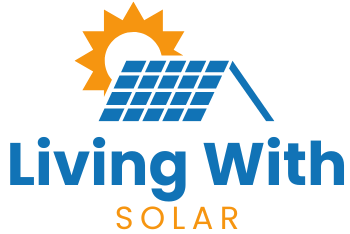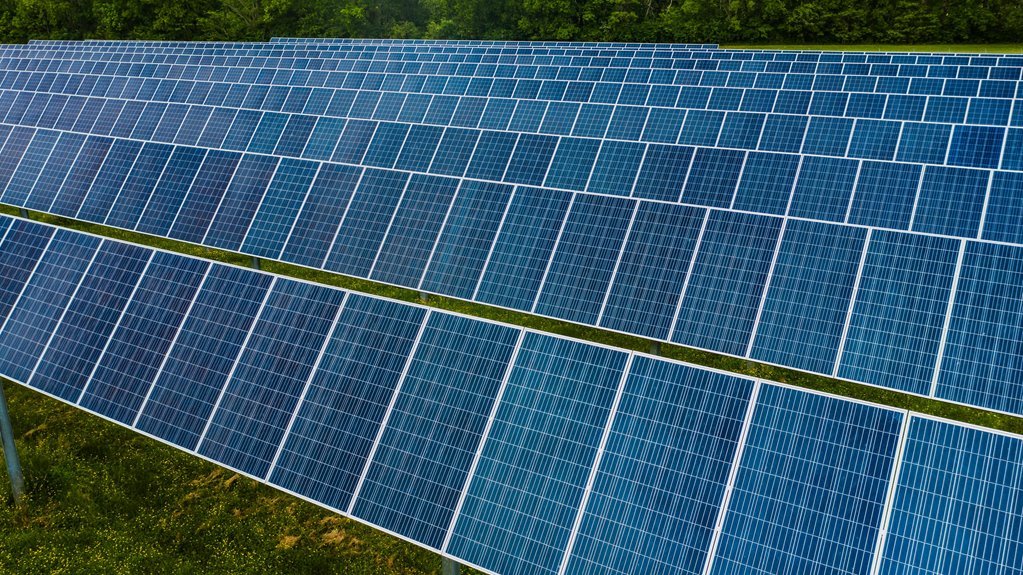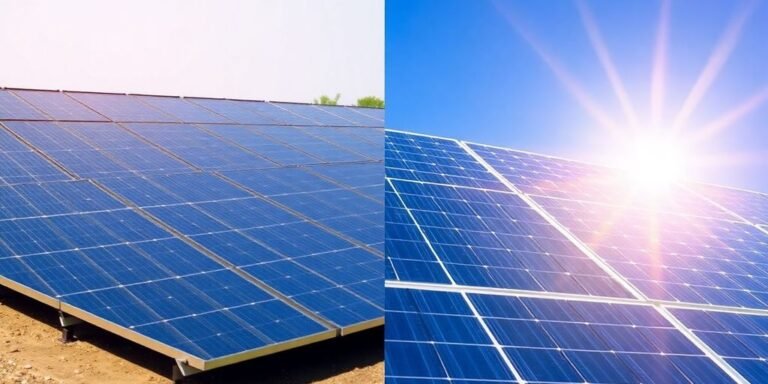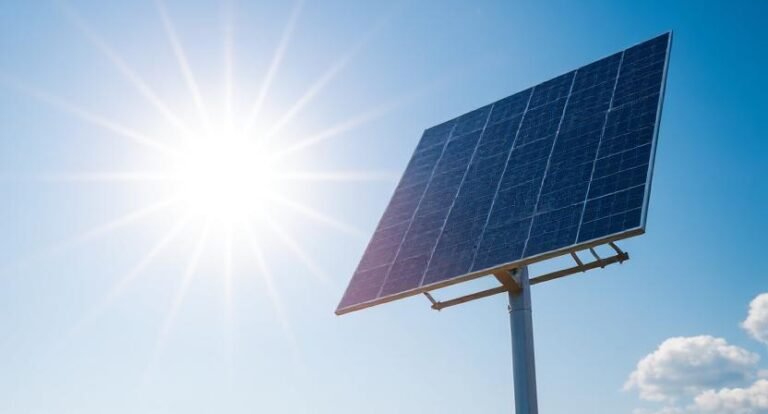Before installing solar panels, I recommend evaluating my energy needs by reviewing past bills and planning for new electrical loads. Next, I check if my roof is suitable, taking into account its age, orientation, and potential shading.
I’ll also research available incentives and gather quotes from multiple installers to find the best deal. Finally, I’ll explore financing options that fit my budget. By following these steps, I’ll set myself up for success with solar energy. There’s still more to ponder!
Key Takeaways
- Assess your energy needs by reviewing past bills and considering potential new loads like electric vehicles.
- Evaluate your roof’s suitability by checking its age, orientation, angle, and potential shading.
- Research available incentives and rebates, including federal tax credits and state-specific programs.
- Gather quotes from multiple qualified solar installers to compare pricing, experience, and customer feedback.
- Understand your payment options, including purchasing, loans, leasing, and Power Purchase Agreements (PPAs).
Switch to Solar Today – Explore Now →
Assess Your Energy Needs
How can I guarantee I’m choosing the right solar panel system for my home? First, I need to assess my energy needs. Reviewing my past electricity bills helps me understand my average monthly electricity consumption.
I also consider any new electrical loads, like electric vehicles, that I plan to add. Conducting a home energy audit reveals areas to improve energy efficiency, reducing overall consumption. This way, I can maximize the performance of my solar energy systems.
By understanding my energy resources, I can optimize my solar potential and move toward energy independence while enjoying savings on my electricity bills.
Evaluate Roof Suitability for Solar Installation
After evaluating my energy needs, the next step is to evaluate whether my roof is suitable for solar installation. I start by checking if my roof is at least 15 years old and structurally sound.
Next, I assess the roof orientation; south-facing roofs maximize energy production, while east and west can still be effective.
I also evaluate the roof angle, aiming for peak solar performance between 15 and 40 degrees. Finally, I look for shading from trees or chimneys, as even minimal shading can reduce the energy solar panels produce. If needed, I’ll consult a professional for solutions.
Research Incentives and Rebates
Before I commit to installing solar panels, I always check out the available incentives and rebates. The Federal Investment Tax Credit lets me deduct 30% of the installation costs from my taxes, which is a huge help.
Plus, many states offer their own programs that can sweeten the deal even more, so it’s worth looking into those too.
Federal Tax Credit
Steering through the world of solar panel installation can feel overwhelming, but understanding the Federal Investment Tax Credit (ITC) can make a significant difference in your financial planning.
This federal tax credit allows you to deduct 30% of your solar panel system’s cost from your federal taxes if you install by December 31, 2032.
With the ITC gradually decreasing to 26% in 2033, timely installation is key to maximizing your savings potential.
Don’t forget to confirm your eligibility and explore state-specific incentives and rebates that can further reduce your upfront costs for solar installations.
State-Specific Programs
As you explore solar panel installation, it’s essential to look into state-specific programs that can greatly lower your costs. Many states offer tax credits and rebates, like California’s SGIP for energy storage systems.
You can also benefit from renewable energy certificates, which let you earn credits for the electricity generation of your solar panels.
Performance-based incentives in states like Massachusetts and New York pay you based on your system’s output.
Additionally, check with local utility companies about net metering policies that credit you for excess energy fed back into the grid. These programs can make going solar even more affordable!
Gather Quotes From Multiple Installers
When I started looking into solar panels, I knew I had to gather quotes from multiple installers to compare pricing options. It’s essential to evaluate each installer’s experience and see what they offer regarding warranties and customer feedback. This way, I could make an informed decision that fit my budget and needs.
Compare Pricing Options
To make the best choice for your solar installation, it’s essential to gather quotes from at least three qualified installers.
This way, you can conduct a thorough pricing comparison. Don’t just look at installation costs; consider equipment quality and after-sales support too.
Check if the quotes mention incentives like the Federal Investment Tax Credit or local rebates, which can lower your overall expenses.
Utilizing resources like the EnergySage Marketplace can also provide transparent pricing and customer reviews.
| Installer Name | Equipment Quality | After-Sales Support |
|---|---|---|
| Installer A | High | Excellent |
| Installer B | Medium | Good |
| Installer C | High | Fair |
Evaluate Installer Experience
Gathering quotes from multiple solar installers is vital for making an informed decision about your solar panel installation. I always start by evaluating installer experience, so I gather quotes from at least three qualified solar installers.
I check their track record and years in business to guarantee they have the expertise needed for successful solar projects. Customer reviews on platforms like EnergySage help me gauge their reputation.
It’s important to confirm that they’re licensed and insured, protecting me from liability. Finally, I inquire about warranties offered, as reputable installers typically provide thorough coverage for both the solar panels and installation services.
Understand Payment Options for Solar
How can you navigate the various payment options for solar panels? Understanding the differences can help you make a sound decision. Here’s a quick look:
| Payment Option | Key Features |
|---|---|
| Purchase | Upfront costs, access to Federal Investment Tax Credit, long-term savings |
| Solar Loans | Fixed interest, ownership, long-term savings |
| Leasing Solar Panels | Little to no upfront costs, lack of tax benefits |
| Power Purchase Agreements | Pay for generated electricity, no ownership responsibilities |
Each option affects your cost savings and responsibilities differently, so weigh them carefully to find the best fit for your home solar energy goals.
Review the Installation Process
After exploring the various payment options for solar panels, it’s time to look closely at the installation process. It begins with a site assessment, where the installer evaluates your home’s electrical status and roof condition.
Once that’s done, they handle the permitting, guaranteeing all necessary documentation is in order. The solar system’s design is finalized, and equipment is ordered based on energy needs. Installation typically takes one to three days, depending on complexity.
Finally, inspections by local authorities and utility companies assure everything complies before your system activates and connects to the grid.
Prepare for Installation Day
While preparing for installation day may seem challenging, a little organization can make the process smooth and efficient. First, I confirm that all necessary permits are secured, as local regulations can impact the installation timeline.
Next, I check the roof condition, ensuring it’s clear of obstructions like vents or chimneys. Scheduling an on-site assessment helps finalize measurements and tackle any shading issues. I also review the contract details with my installer to clarify expectations.
Finally, I prepare my home by making space for the installation crew and equipment, ensuring safe access to the roof and any electrical panels.
Frequently Asked Questions
How Do I Prepare for Solar Installation?
To prepare for solar installation, I started by reviewing my electricity bills, evaluating my roof’s condition and orientation, gathering quotes from installers, and exploring available incentives. It’s important to understand my energy needs first.
What Is the 20% Rule for Solar Panels?
The 20% rule for solar panels means I shouldn’t cover more than 20% of my roof area. This helps guarantee ideal energy production, structural integrity, and avoids shading issues or problems with local building codes.
What I Wish I Knew Before Going Solar?
Before going solar, I wish I’d realized how essential it is to understand my energy usage and roof conditions. Plus, exploring incentives could’ve saved me money. Don’t skip comparing installer quotes; it’s worth it!
What Are the Steps for Installing Solar Panels?
When I installed solar panels, I first assessed my electricity use, then checked my roof’s condition. I got professional evaluations, secured permits, and finally scheduled the installation. It’s a detailed but rewarding process!





